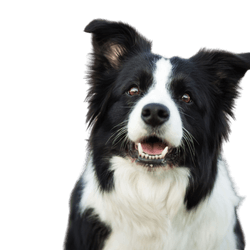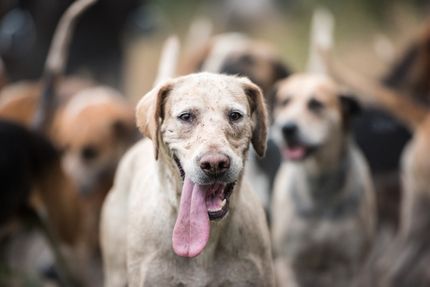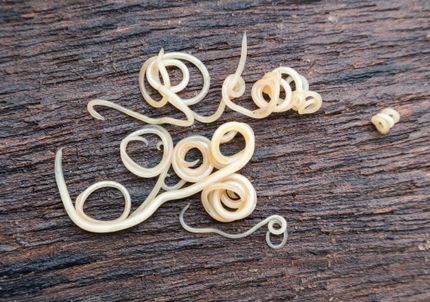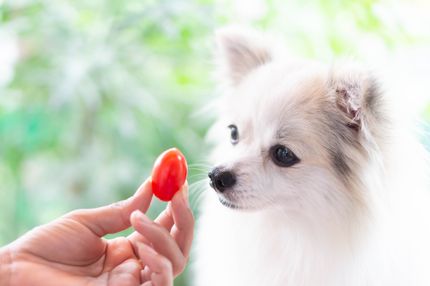Facts & Origin
Origin and history of the Border Pom
The Border Pom is an exciting blend of the intelligent Border Collie and the charming Pomeranian. This hybrid breed combines the characteristics of both parent breeds to create a unique and lovable companion dog. Although the Border Pom is not a recognized purebred dog, it is gaining popularity as a loyal family companion. The description of the Border Pom is based on general characteristics of the breed. Each dog is individual, and actual appearance and behavior may vary.
Suitability and attitude
The Border Pom is suitable for active individuals or families who have the time and energy to meet his exercise and mental requirements. He can thrive in both apartments and houses as long as adequate exercise and mental stimulation are provided. The Border Pom can also be a good choice for experienced dog owners who enjoy working with an intelligent and active dog.
| Alternate Name | - |
| Origin | UK - Germany |
| Life expectancy | 10 - 16 years |
| Care requirements | high-maintenance |
| Activity level | high - low |
| FCI group | not recognised |
| AKC group | not recognised |
| KC group | not recognised |
More Border collie mixes
More Pomeranian mixes
Attitude, character and temperament of the breed
Possible character traits of the Border Pom
The Border Pom usually shows the following character traits:
- Intelligent and eager to learn: the Border Pom inherits the high intelligence of the Border Collie and the curiosity of the Pomeranian. He is usually quick to learn a variety of tricks and commands.
- Active and energetic: Since both the Border Collie and the Pomeranian are energetic breeds, it is important to provide the Border Pom with plenty of exercise and mental stimulation. Long walks, active games and mental challenges are ideal to meet his needs.
- Playful and affectionate: The Border Pom is usually playful and affectionate. He can form a strong bond with his family and loves spending time with them.
- Protective Instinct: Because of the Pomeranian's guard dog temperament, the Border Pom may show some protective instincts and be wary of strangers.
- Grooming Requirements: The Border Pom's long coat requires regular grooming to prevent matting. Daily brushing is recommended to keep the coat healthy and shiny. Additionally, the ears should be checked and cleaned regularly to prevent infection.
Character
Health and care
The Border Pom is generally a healthy dog, but it is important to watch for possible hereditary health problems in both parent breeds. These include eye problems, joint problems, and dental problems. Regular veterinary examinations, a balanced diet and regular dental care are important to maintain the Border Pom's health.
What does this mixed breed look like?
The Border Pom is usually a medium-sized dog with a mixture of the characteristics of the Border Collie and the Pomeranian. Its coat can be long and dense and come in a variety of colors such as black, brown, white or a combination thereof. The eyes are often lively and expressive, and the ears may be erect or semi-erect.
| Fur length | medium - long |
| Fur | flat coated |
| Ear shape | Standing Ears |
| Tail | fanned out - rolled up |
| Anatomy | slim, sporty, slim, dainty |
| Size ♀ | 12 - 53 cm |
| Weight ♀ | 2 - 19 kg |
| Size ♂ | 17 - 56 cm |
| Weight ♂ | 2 - 20 kg |
| Suitable For | - |
Known Diseases
Epilepsy
Definition: Dog has epilepsy if, for example, at least two epileptic seizures occur more than 24 hours apart.
Eye diseases
Often occur with allergies and intolerances.
Hip dysplasia (HD)
Hip dysplasia (HD) is a genetic condition in dogs where the hip joint is not shaped properly. This leads to pain, stiffness and restricted movement.
Elbow dysplasia (ED)
Elbow joint dysplasia is a chronic disease complex of the elbow joint of fast growing dog breeds.
Numbness
Often occurs in old age.
Heart disease
Can occur frequently in dogs and can sometimes be treated with medication.
Eye infections
Chronic eye infections can be very painful in dogs and can be treated with medication. In rare cases, the cornea must be treated.
Patellar luxation
Patellar luxation is the term used to describe a displacement of the kneecap, which is one of the most common causes of lameness in dogs.
FAQ
-
There are no specific health problems that are specific to a Border Collie-Pomeranian mix. However, several health problems based on the parent breed can be inherited, such as hip dysplasia, eye disease, and neurological disease.
-
The optimal level of care depends on the needs of the individual. The amount of grooming required may vary depending on temperament, age and size. Regular brushing, bathing and nail trimming are necessary in this breed to ensure the hygiene of the animal and to avoid possible hair tangles.
-
The ideal food plan should be determined depending on the dog's age, size, activity level and general health. Regardless, it is important to choose a food that is rich in high-quality proteins, vitamins and minerals and meets the specific needs of the dog.
-
The personality of a Border Collie-Pomeranian mix depends on the personality of the parent breed. Usually they are intelligent, energetic, easy to train and very affectionate. However, they can also be somewhat suspicious, stubborn or even fearful.
-
Since this hybrid breed is very active, it looks for play activities that can use its energy. Walks, hide and seek, fetch, agility classes and "visiting" the dog park are ideal to keep the dog active and happy.





















